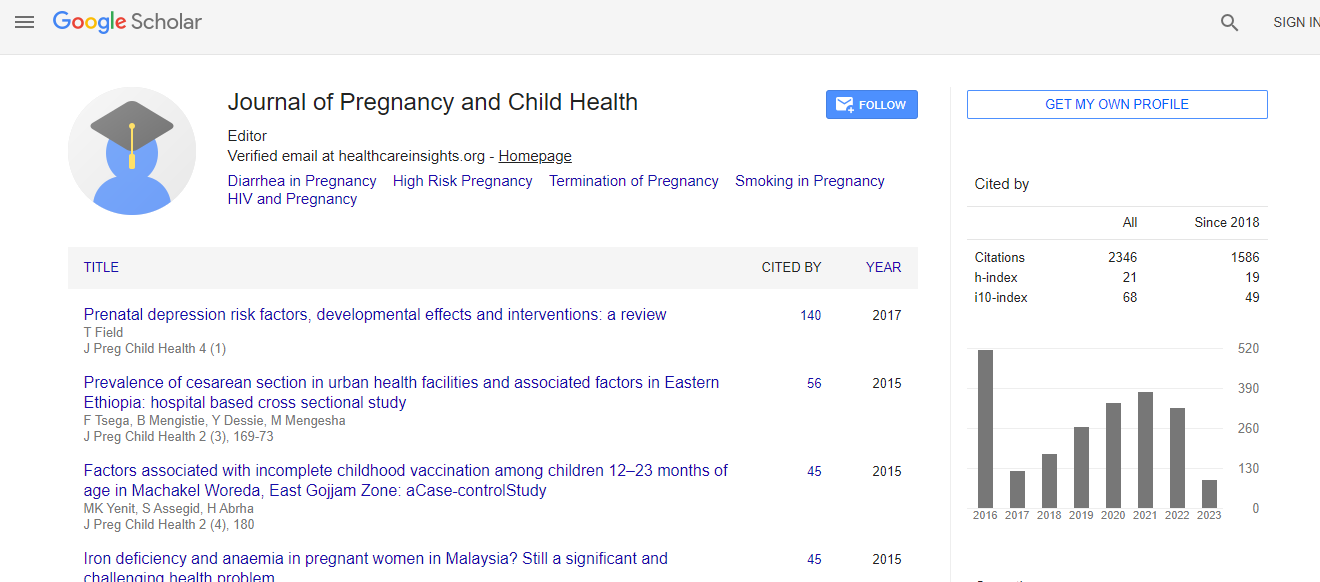Research Article
Prevalence and Associated Risk Factors of Anemia among Pregnant Women in Rural Part of JigJiga City, Eastern Ethiopia: A Cross Sectional Study
Solomon Gebretsadik Bereka1*, Adunga Negussie Gudeta1, Melese Abate Reta2 and Lemessa Assefa Ayana1
1Department of Public Health, College of Medicine and Health Sciences, Jig-jiga University, Ethiopia
2Department of Medical Laboratory Science, Faculty of Health Science, Woldia University, Ethiopia
- Corresponding Author:
- Solomon Gebretsadik Bereka
Department of Public Health
College of Medicine and Health Sciences
Jigjiga University, Ethiopia
Tel: 251949320147
E-mail: solomonbereka@gmail.com
Received date: June 07, 2017; Accepted date: June 19, 2017; Published date: June 24, 2017
Citation: Bereka SG, Gudeta AN, Reta MA, Ayana LA (2017) Prevalence and Associated Risk Factors of Anemia among Pregnant Women in Rural Part of JigJiga City, Eastern Ethiopia: A Cross Sectional Study. J Preg Child Health 4:337. doi:10.4172/2376-127X.1000337
Copyright: © 2017 Bereka SG, et al. This is an open-access article distributed under the terms of the Creative Commons Attribution License, which permits unrestricted use, distribution and reproduction in any medium, provided the original author and source are credited.
Abstract
Background: Anemia prevalence varies by place of residence ‒ a higher proportion of women in rural areas are anemic as compared to those in urban areas. The main objective of this study was to identify and analysis the prevalence and associated risk factors of anemia among pregnant women in rural part of Jigjiga city, eastern Ethiopia. Method: Among 417 pregnant women, a cross-sectional study was done from August to December 2015. A structured questionnaire was used to collect data related to socio-demographic characteristics, medical, obstetric and dietary practices. Haemoglobin levels of pregnant women were determined by applying HemoCue photometer. Statistical analysis was conducted with SPSS-version 21. Result: Of the total respondent 63.8% were anemic. The multiple logistics regression analysis showed that gravidity (AOR=2.07; 95% CI: 1.30-2.91); mother’s age (AOR=2.4; 95% CI: 0.01-4.06); family size (AOR=2.12; 95% CI: 1.11-3.31); third trimester (AOR=2.1; 95% CI: 1.07-5.04); iron supplementation (AOR=1.30; 95% CI=1.01-4.01); mid-upper arm circumference of less than 23 (AOR=0.57; 95% CI: 0.20-0.89) and body mass index (AOR=2.03; 95% CI: 2.00-3.81) were significant predictors associated with anemia among pregnant women. Conclusion: Based on World Health Organization (WHO) in the study area anemia was a major public health problem (prevalence greater than 40%). Hence, we recommended that nutritional education and also education about risk factors of anemia should be done.

 Spanish
Spanish  Chinese
Chinese  Russian
Russian  German
German  French
French  Japanese
Japanese  Portuguese
Portuguese  Hindi
Hindi 
